Irish Potato Farls: A Traditional Delight
Steeped in heritage, Irish potato farls hold a cherished place in the hearts of many. This simple yet satisfying dish has been a staple of Irish kitchens for generations. With just a handful of ingredients, it’s a recipe that brings warmth and nostalgia to the table.
Traditionally enjoyed as part of a hearty breakfast, these farls are a testament to the beauty of uncomplicated cooking. Made with floury potatoes, butter, and a touch of flour, they are rolled out and cooked to golden perfection. The process takes just 30 minutes, making it an ideal choice for any time of the day1.
What makes this dish truly special is its connection to family traditions. Many of us recall the comforting aroma of farls sizzling in the pan, a memory that transports us back to childhood kitchens. Whether served with a fry-up or enjoyed on their own, they remain a timeless favourite.
In this guide, we’ll walk you through the steps to create your own batch of these golden delights. From preparation to serving, it’s a journey that celebrates simplicity and tradition. Let’s get started and bring a piece of Irish heritage to your table.
A Taste of Irish Heritage
Born from necessity, this dish has evolved into a symbol of comfort and heritage. Its roots trace back to a time when resourcefulness was key, and every ingredient was valued. Leftover mashed potato, a common staple, was ingeniously transformed into a hearty breakfast treat. This humble creation, known as a potato cake or griddle cake, became a beloved part of daily life.
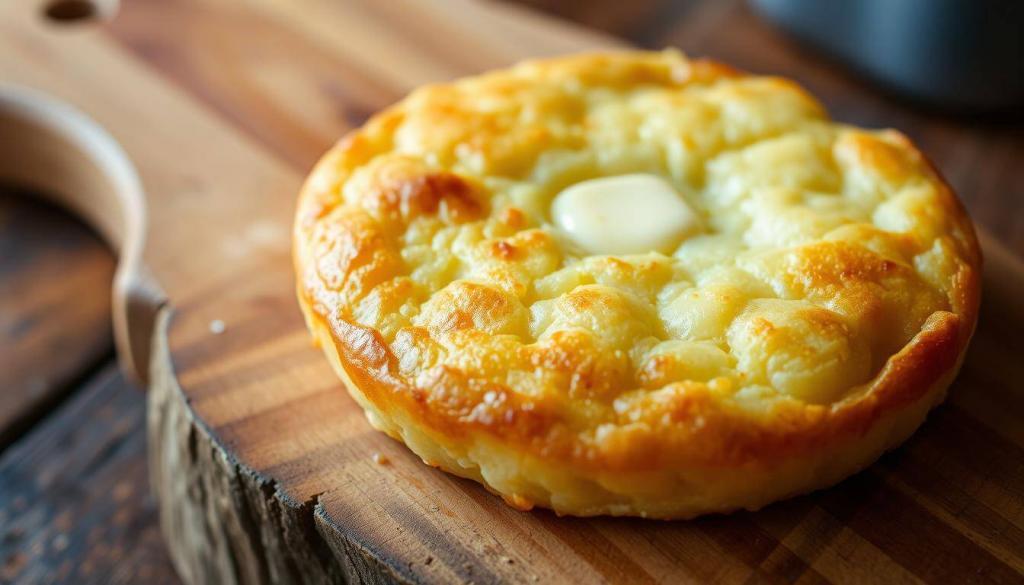
The Rich History Behind Potato Farls
In the past, families often relied on simple, filling meals to sustain them through long days. Leftover mashed potato, combined with flour and butter, was shaped into flat rounds and cooked on a griddle. This quick preparation, taking just 30 minutes, made it a practical choice for busy households2. Over time, the dish became a staple of the Irish breakfast, served alongside eggs, bacon, and sausages.
Traditional techniques, passed down through generations, ensured the dish retained its authentic flavour. Varieties like maris piper potatoes were prized for their texture, making them ideal for this recipe3. The cultural significance of this dish lies in its presence in family kitchens, where it continues to evoke warmth and nostalgia.
Evolution into Today’s Favourite Dish
From its humble beginnings, this dish has grown into a modern favourite. Its versatility allows it to be enjoyed in various ways, whether as part of a hearty meal or on its own. The term “farl,” meaning “fourths,” reflects the traditional shape cut from a circle of dough3. Today, it remains a cherished part of Irish heritage, connecting us to the past while delighting our taste buds.
Selecting the Finest Ingredients
The foundation of any great dish lies in its ingredients. For this traditional recipe, choosing the right components ensures authenticity and flavour. Every element, from the potatoes to the seasonings, plays a crucial role in achieving the perfect result.
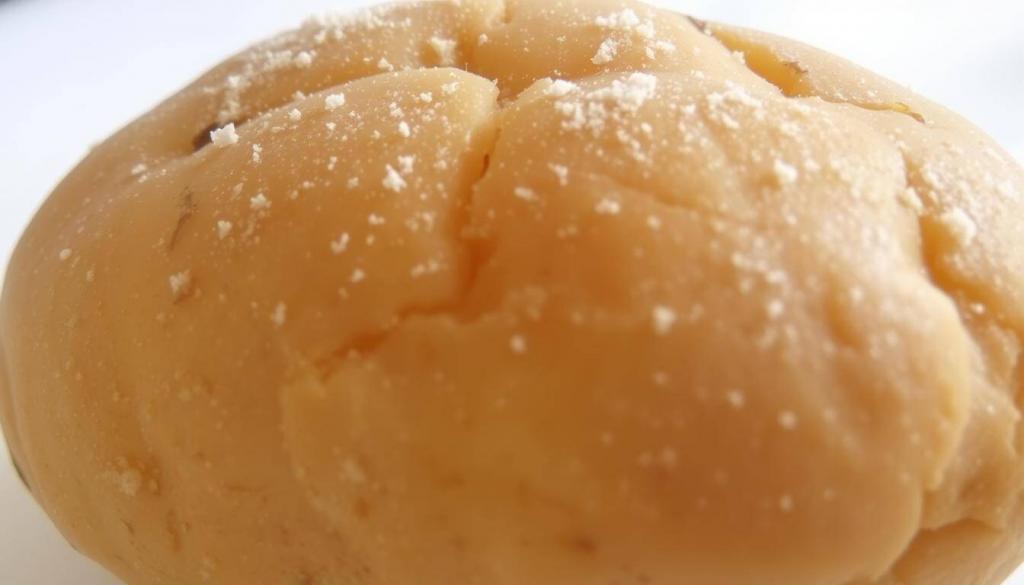
Choosing the Best Floury Potatoes
Floury potatoes, such as Maris Piper, are ideal for this dish. Their high starch content creates a light, fluffy texture when mashed. We recommend using medium-sized potatoes, weighing around 300-400g each, for the best consistency4.
These potatoes break down easily, making them perfect for binding with other ingredients. Their natural flavour also enhances the overall taste, ensuring a satisfying result every time.
Flour, Butter, and Seasonings for Perfection
High-quality all-purpose flour is essential for binding the mixture. Around 60g of flour ensures the dough holds its shape without becoming too dense4. Butter, on the other hand, adds richness and helps achieve a golden-brown crisp when cooked.
Seasoning is equally important. A pinch of salt enhances the natural flavours, while careful measurement ensures balance. Together, these ingredients create a dish that’s both comforting and authentic.
Essential Kitchen Tools and Preparation Techniques
To create this traditional dish, having the right tools is just as important as the ingredients. Each piece of equipment plays a vital role in ensuring the recipe turns out perfectly. Let’s explore the must-have items for your kitchen.
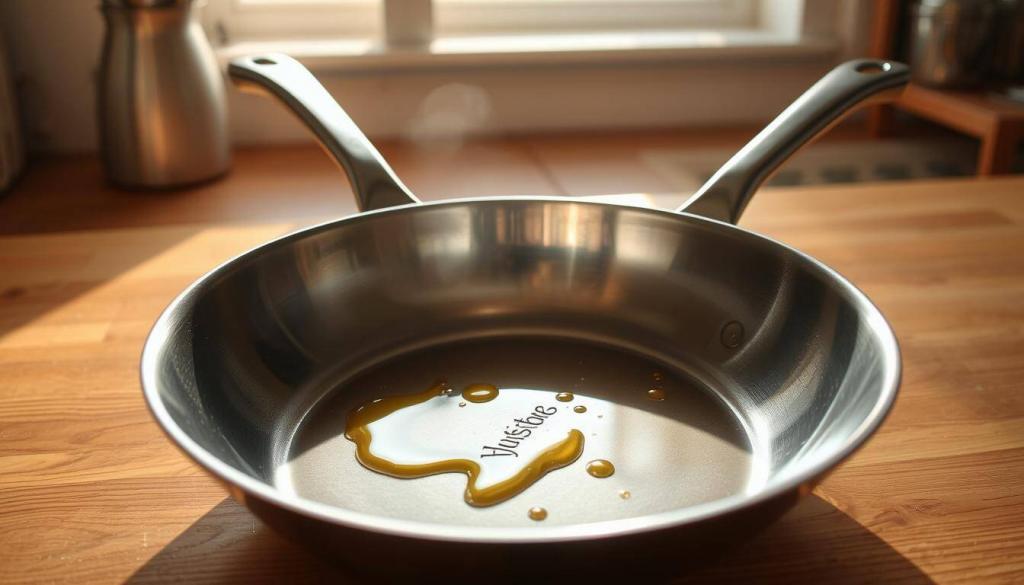
Must-Have Tools for a Traditional Kitchen
A medium saucepan is essential for boiling the potatoes until they’re tender. A potato sieve is another key tool, helping to achieve a smooth, lump-free texture. For frying, a non-stick frying pan or griddle ensures even cooking and a golden crisp finish5.
Having a clean, floured surface is crucial for shaping the dough. A chopping board and rolling pin also come in handy during preparation. Clear instructions and measuring tools ensure accuracy, making the process straightforward and enjoyable.
- Medium saucepan: Perfect for boiling potatoes to the right consistency.
- Potato sieve: Ensures a smooth texture for the dough.
- Non-stick frying pan: Ideal for achieving an even golden crisp.
- Floured surface: Prevents sticking and makes shaping easier.
When frying, avoid crowding the pan to ensure each piece cooks evenly. This technique helps maintain the dish’s traditional texture and flavour. By using the right tools, you honour the recipe’s heritage while creating a delicious result.
Irish Potato farls: A Step-by-Step Guide
Mastering the art of this traditional dish begins with careful preparation and attention to detail. Below, we’ll walk you through each stage, from prepping the ingredients to achieving the perfect golden crisp. Follow these clear instructions to bring this classic recipe to life in your kitchen.
Prepping and Cooking Your Potatoes
Start by peeling and chopping your potatoes into even-sized pieces. This ensures they cook uniformly. Place them in a medium saucepan, cover with water, and boil for 20-25 minutes until tender6. Alternatively, you can steam them for a similar result. Once cooked, drain and dry the potatoes thoroughly using a sieve to remove excess moisture7.
For a quicker option, you can use leftover mashed potato. Simply ensure it’s smooth and free of lumps before proceeding. This step is crucial for achieving the right texture in your dough.
Mixing, Forming, and Shaping the Dough
In a large bowl, combine the mashed potato with flour, salt, and melted butter. Mix until a soft dough forms. The dough should hold together without being sticky. If needed, add a little more flour to achieve the right consistency6.
Turn the dough out onto a floured surface and gently flatten it into a circle about 8 inches in diameter. Use a knife to cut the circle into quarters or six equal pieces, depending on your preference7.
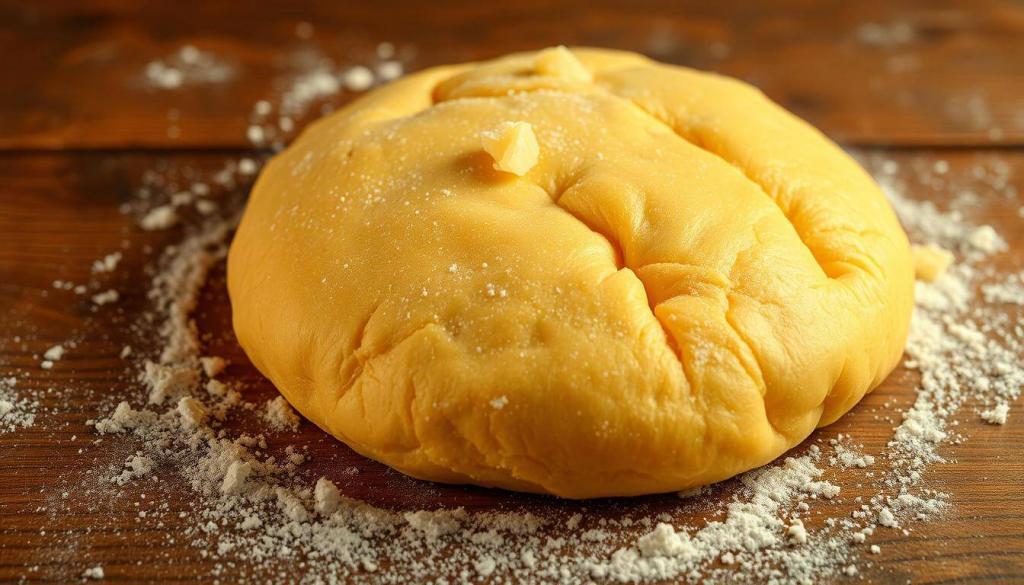
Frying to Achieve the Perfect Golden Crisp
Preheat a non-stick frying pan or griddle over medium heat. Lightly grease the surface with butter or oil. Place the dough pieces in the pan, ensuring they don’t overlap. Cook for 4-5 minutes on one side until golden brown, then flip and repeat on the other side6.
For even cooking, avoid crowding the pan. If using a griddle, ensure it’s heated evenly to prevent uneven browning. Once cooked, serve warm and enjoy as part of a hearty meal or on their own.
Insider Tips for Flavour and Texture
Elevating the flavour and texture of this traditional dish requires a few expert techniques. Small adjustments can make a big difference, transforming a simple recipe into something truly special. Let’s explore some insider tips to help you achieve the best results.
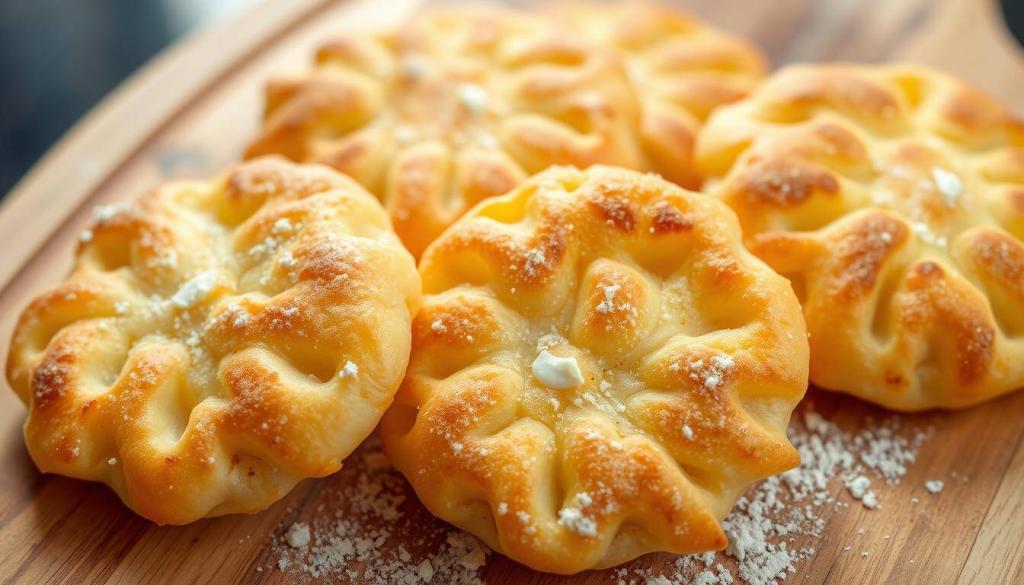
Secret Techniques to Enhance Your Dish
Butter plays a crucial role in both flavour and texture. Adding it in two stages—once during mixing and again when frying—creates a richer, more indulgent result. Cold butter, grated into the dough, ensures a flaky texture, while melted butter adds a golden crisp when cooking8.
Pepper is another key ingredient. A careful balance enhances the natural taste of the potatoes without overpowering the dish. Experiment with freshly ground pepper for a more aromatic finish9.
For a sweeter twist, try serving your creation with a dab of jam. This unexpected pairing adds a delightful contrast, making it a versatile option for any meal.
- Butter in two stages: Grate cold butter into the dough and use melted butter for frying.
- Balance pepper: Use freshly ground pepper to enhance the natural flavours.
- Jam pairing: Add a sweet touch with a small amount of jam.
Timing and temperature are also critical. Cooking over medium heat ensures even browning, while avoiding overcrowding the pan keeps the texture light and crisp8. These small adjustments can elevate your dish to new heights.
Don’t be afraid to experiment. Adding chopped chives, spring onions, or caraway seeds can introduce new dimensions of flavour. These additions make the dish uniquely yours while staying true to its roots9.
Pair these tips with a traditional breakfast to fully experience the heritage of this beloved recipe. Whether you’re a seasoned cook or a beginner, these techniques will help you create a dish that’s both comforting and memorable.
Storing and Reheating for Ongoing Enjoyment
Preserving the deliciousness of this traditional dish ensures it can be enjoyed beyond the initial meal. Proper storage and reheating techniques are key to maintaining its flavour and texture. Let’s explore the best methods to keep your creation fresh and tasty.
Best Methods for Storing Leftovers
To store your dish, place it in an airtight container or wrap it tightly in cling film. This prevents exposure to air, which can dry it out. In the refrigerator, it will stay fresh for up to three days10.
For longer storage, freezing is an excellent option. Place the pieces on a baking tray lined with parchment paper to avoid sticking. Once frozen, transfer them to a freezer-safe bag or container. They can be stored this way for up to three months11.
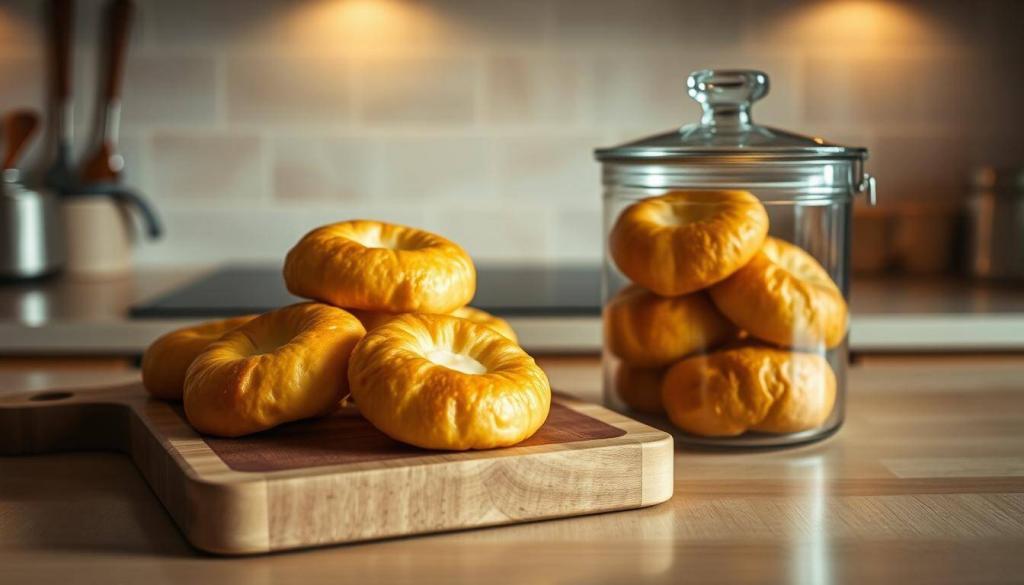
Reheating Without Compromising Flavour
When reheating, avoid the microwave to preserve the crisp texture. Instead, use a non-stick frying pan over medium heat. Lightly grease the pan with butter or oil and cook for 2-3 minutes on each side until warmed through10.
Alternatively, the oven works well for larger batches. Preheat to 180°C and place the pieces on a baking tray. Heat for 8-10 minutes, flipping halfway through. This method ensures even reheating and restores the golden crisp11.
By following these techniques, you can enjoy your dish as if it were freshly made. Whether it’s a quick snack or part of a meal, these tips ensure every bite is as delightful as the first.
Savouring the Legacy of Potato Farls
This humble dish has woven itself into the fabric of family traditions, offering both comfort and connection. It’s a cherished part of an authentic breakfast, often served alongside bacon and egg, or enjoyed with a dollop of jam for a sweet twist12. Its versatility allows it to shine in various forms, whether cut into circle quarters or paired with smoked salmon on a griddle.
We celebrate its enduring legacy, a testament to the ingenuity of using leftover mashed ingredients to create something extraordinary. Passed down through generations, this recipe continues to evoke warmth and nostalgia, connecting us to our roots13.
We invite you to experiment with different serving suggestions, ensuring every time you prepare it, it feels uniquely yours. Share this recipe with loved ones, preserving its legacy for years to come. Whether as a hearty meal or a simple snack, it remains a timeless favourite.
Source Links
- Traditional Irish Potato Farls – https://veggiedesserts.com/potato-farls/
- Super Simple Authentic Irish Potato Bread – https://bellyrumbles.com/irish-potato-bread-recipe/
- Irish Potato Cakes (Potato Farls) – https://www.jocooks.com/recipes/irish-potato-cakes-potato-farls/
- Irish Garlic Potato Farls – Bord Bia – https://www.bordbia.ie/recipes/potato-recipes/irish-garlic-potato-farls/
- Potato Farls (Irish Potato Bread) – https://www.thelastfoodblog.com/potato-farls/
- Authentic Irish Potato Farls Recipe – – https://www.biggerbolderbaking.com/authentic-irish-potato-farls/
- Potato Farls (Irish Potato Cakes) | Moorlands Eater – https://moorlandseater.com/potato-farls-irish-potato-cakes/
- The easy way to make potato farls | Back to basics – https://www.theguardian.com/lifeandstyle/2014/mar/14/how-to-make-potato-farls-back-to-basics
- Irish Potato Farls Recipe – https://nodashofgluten.com/irish-potato-farls-recipe/
- Floury Mashed Potatoes Irish Style – https://www.irishamericanmom.com/floury-mashed-potatoes-irish-style/
- Modern Champ – A Healthy Irish Potato Recipe – Eat Something Sexy – https://www.eatsomethingsexy.com/champ-irish-potato-recipe/
- Northern Ireland cuisine: 10 things we love – https://www.olivemagazine.com/travel/uk/northern-ireland-travel/northern-ireland-cuisine-10-things-we-love/
- IRISH SNACKS AND TREATS: EXPLORING IRELAND’S SWEET AND SAVORY DELIGHTS – https://irishfoodhub.com/irish-snacks-and-treats-exploring-irelands-sweet-and-savory-delights/
Footer 1
Call the HERD
Always available for any questions. Call and we will be happy to help.
Follow the HERD
Keep up to date on new products available in store.
Important Links
Join the HERD
Be the first to know about any offers or promotions.
- Herd Butchery 2025

Leave a Reply